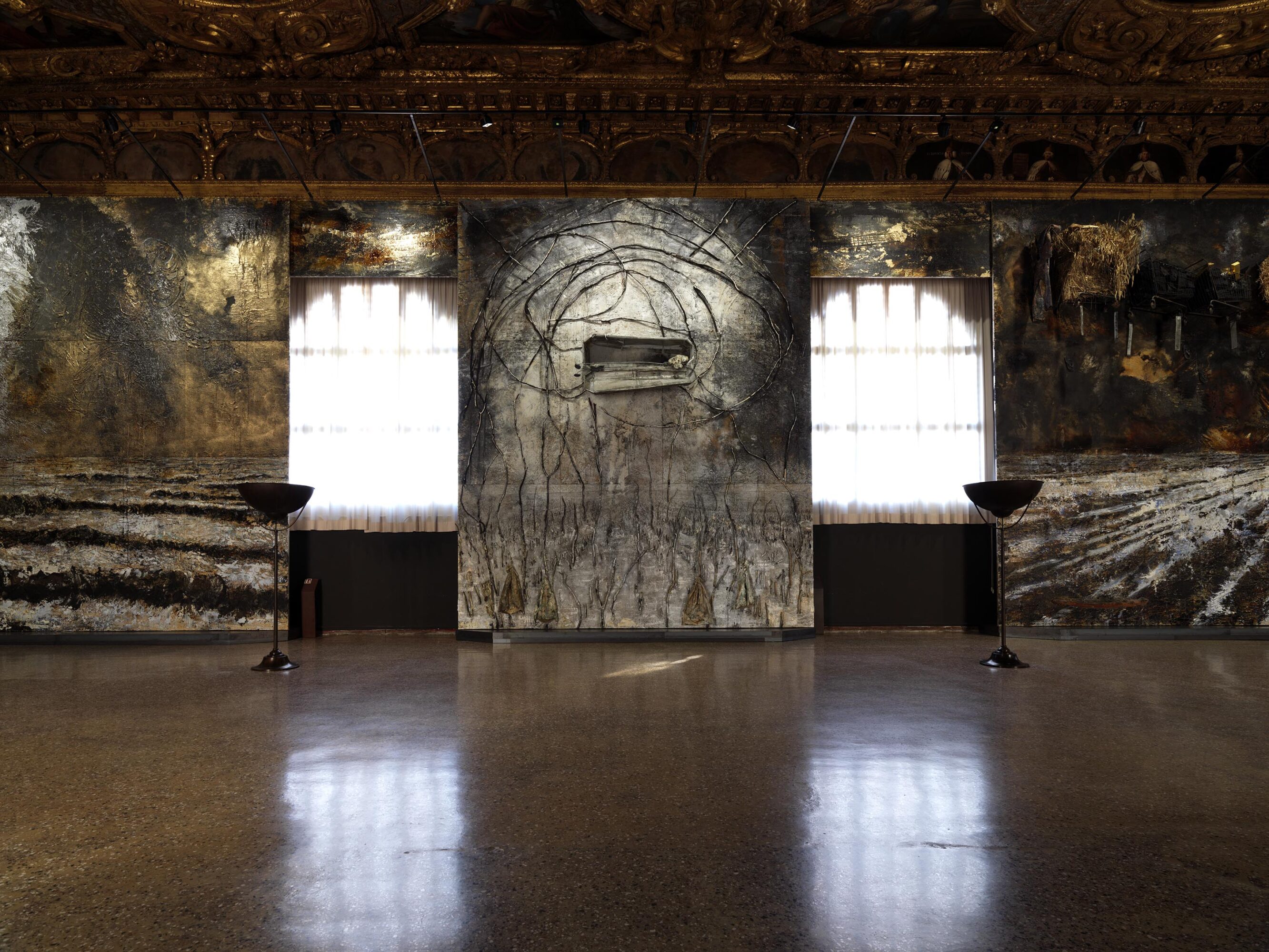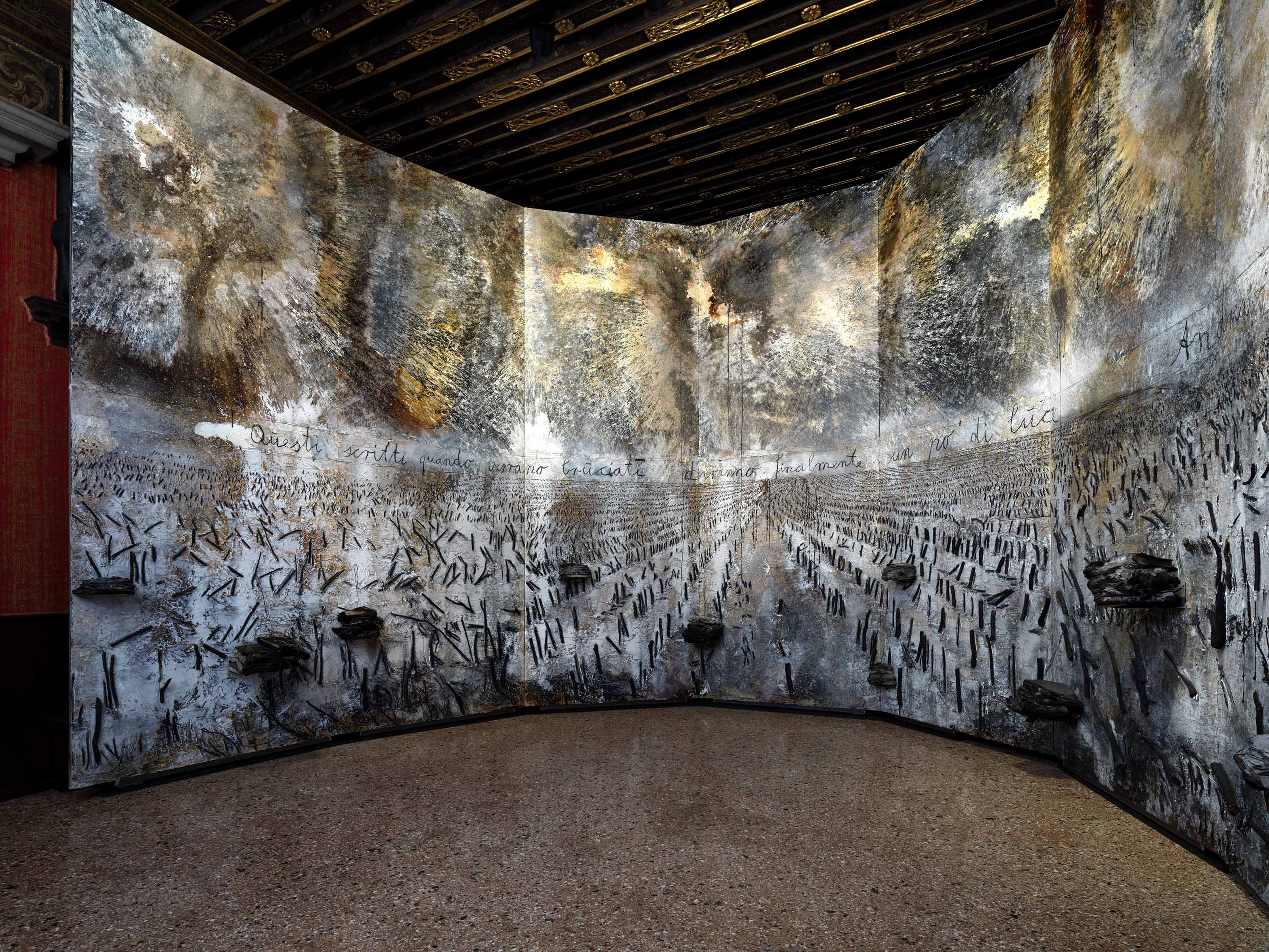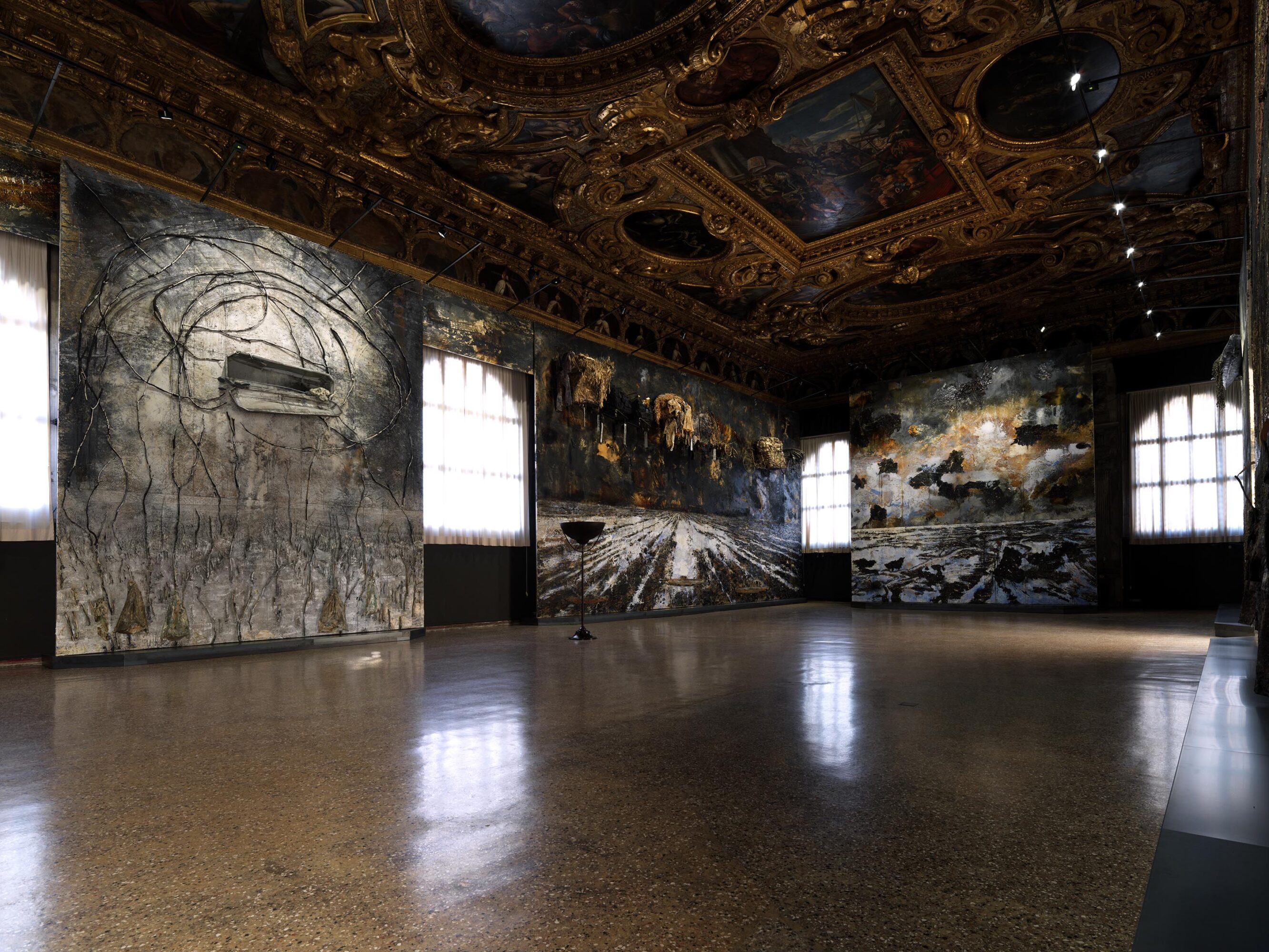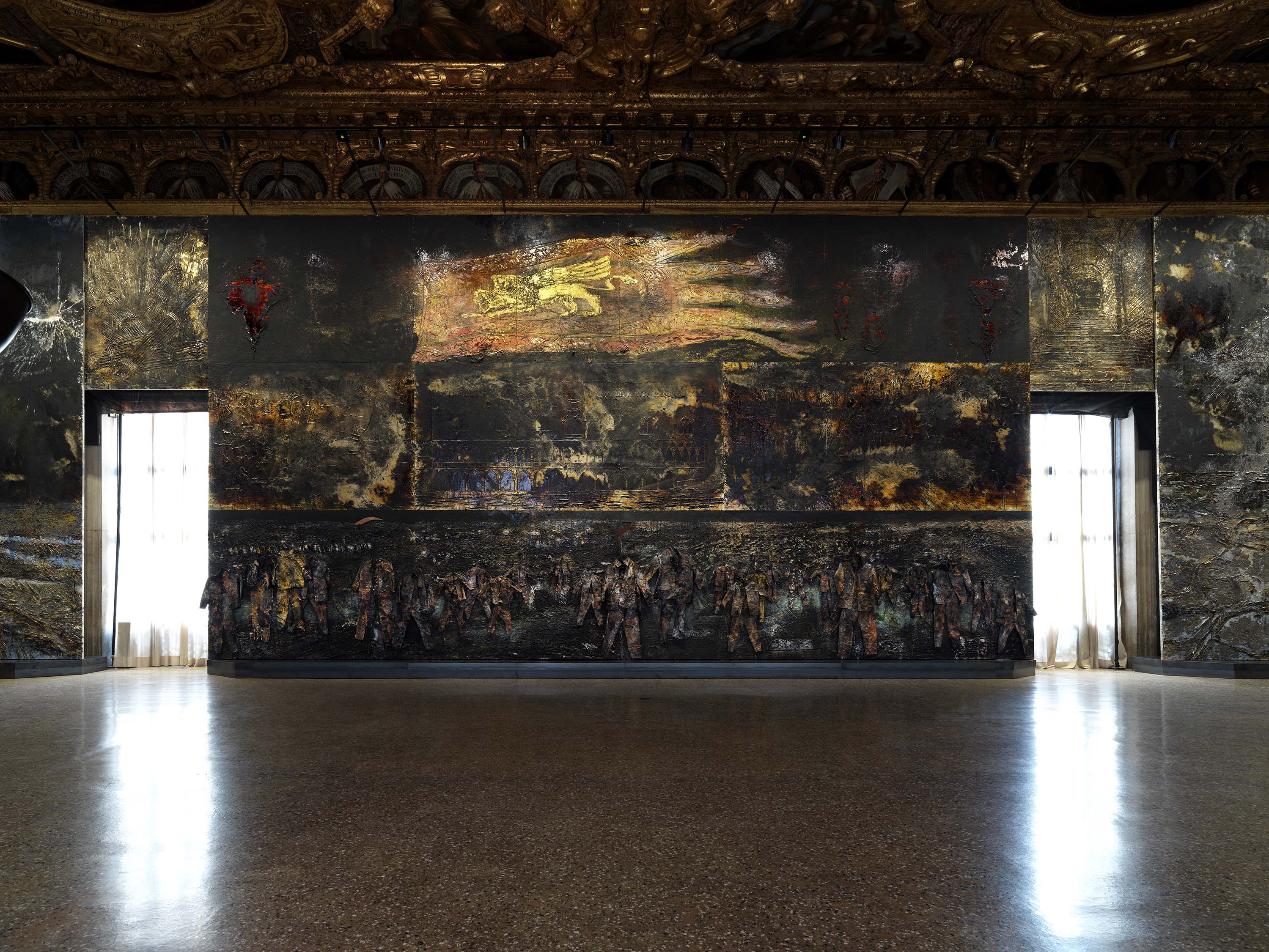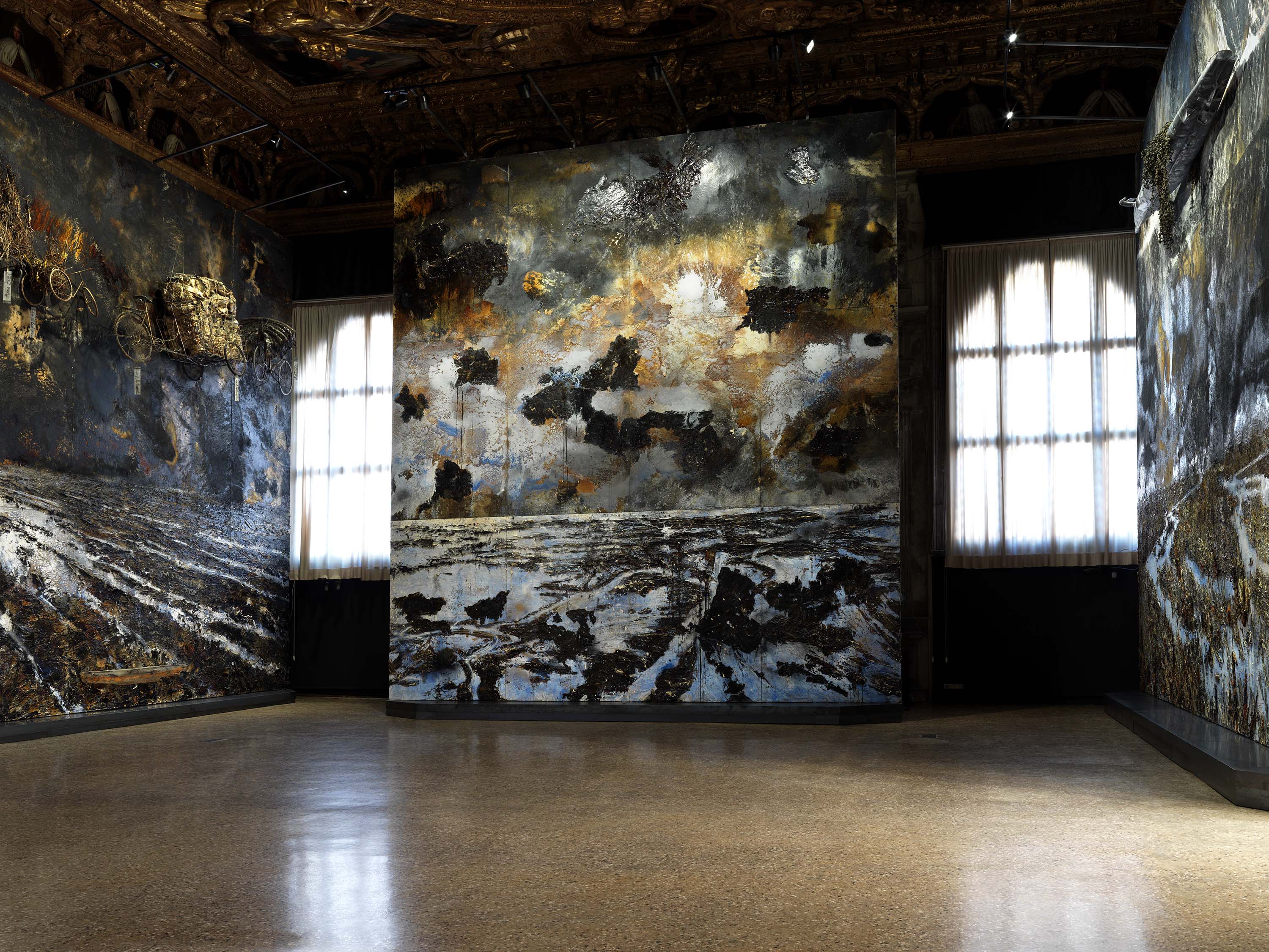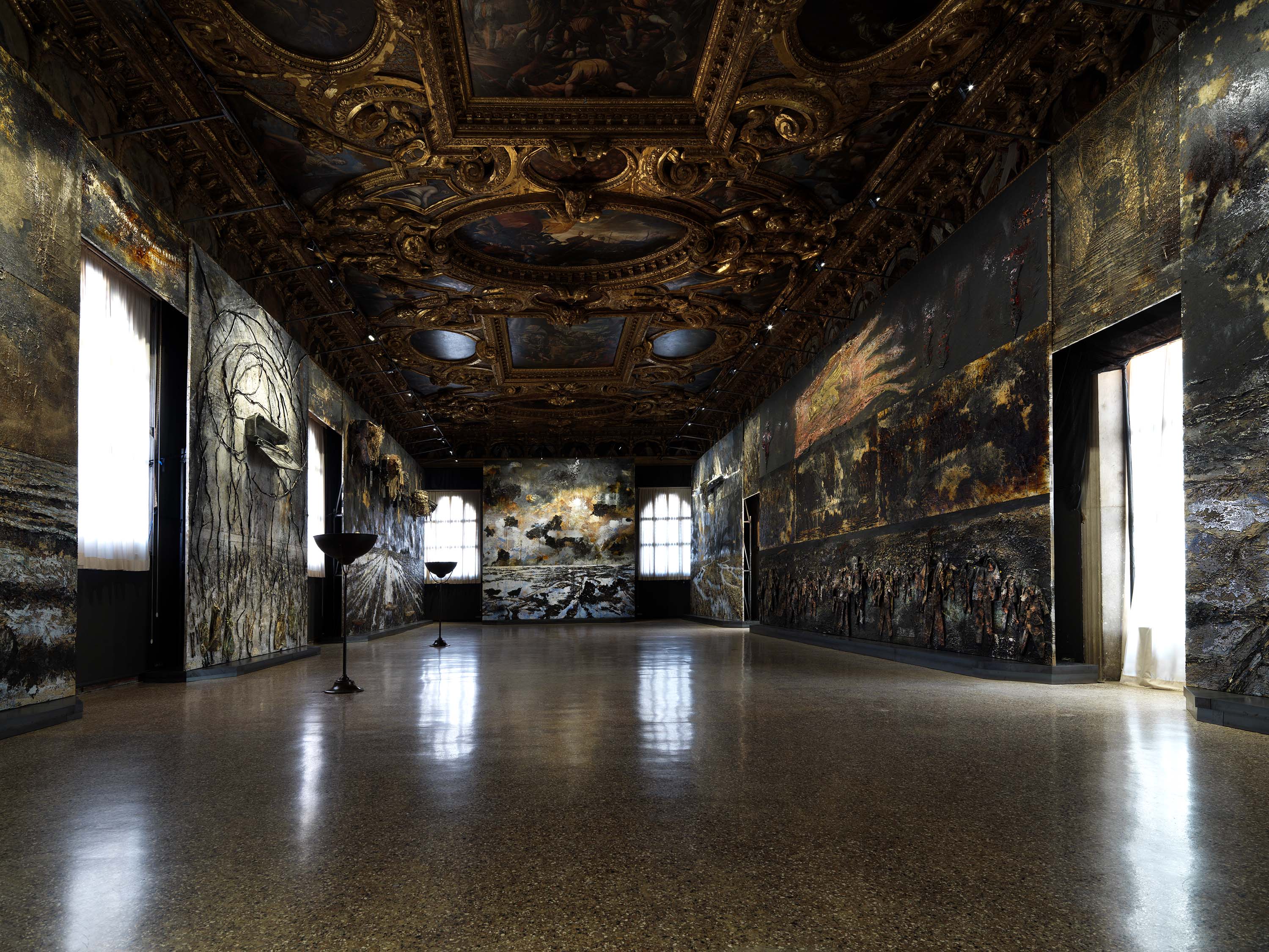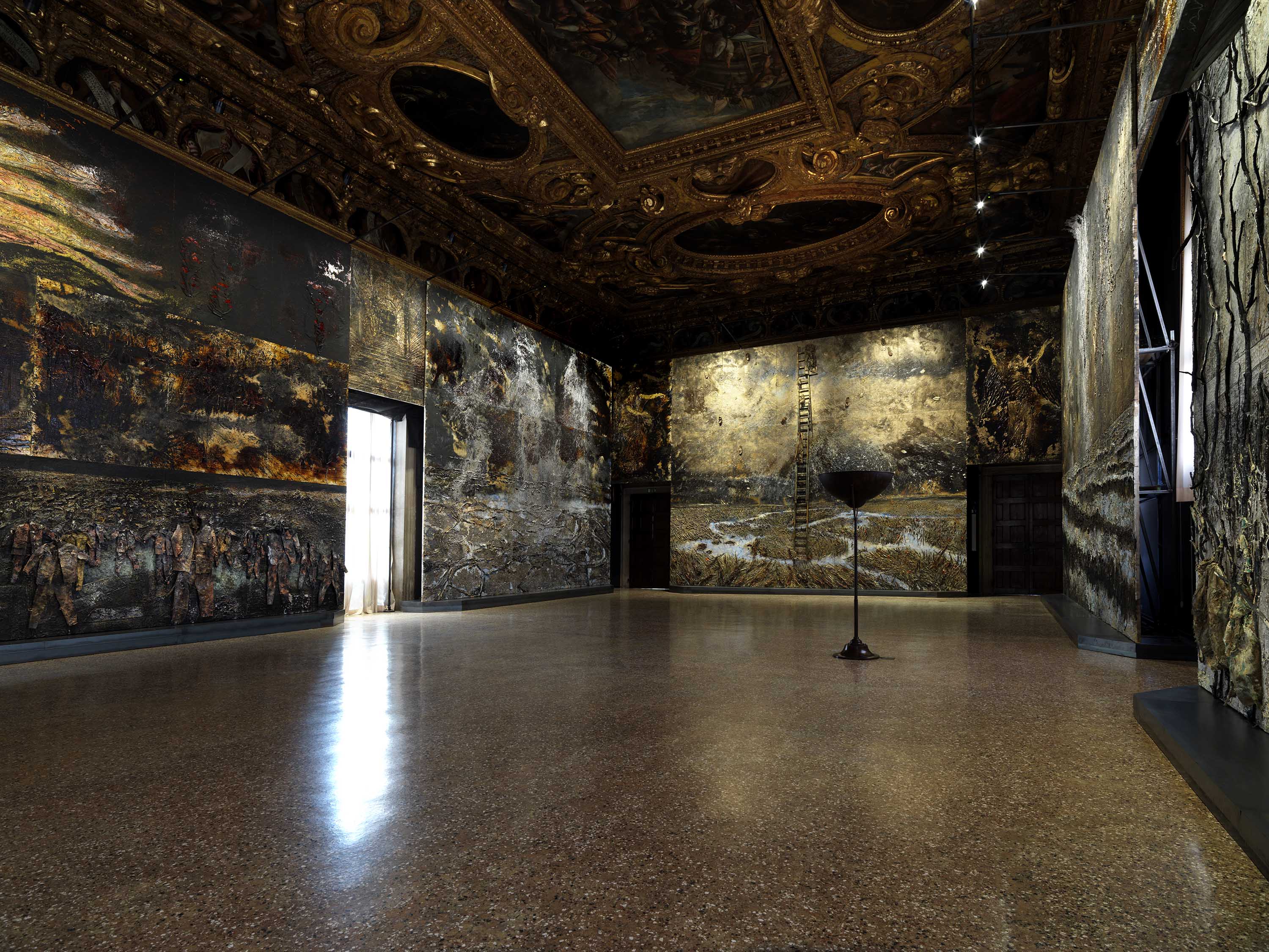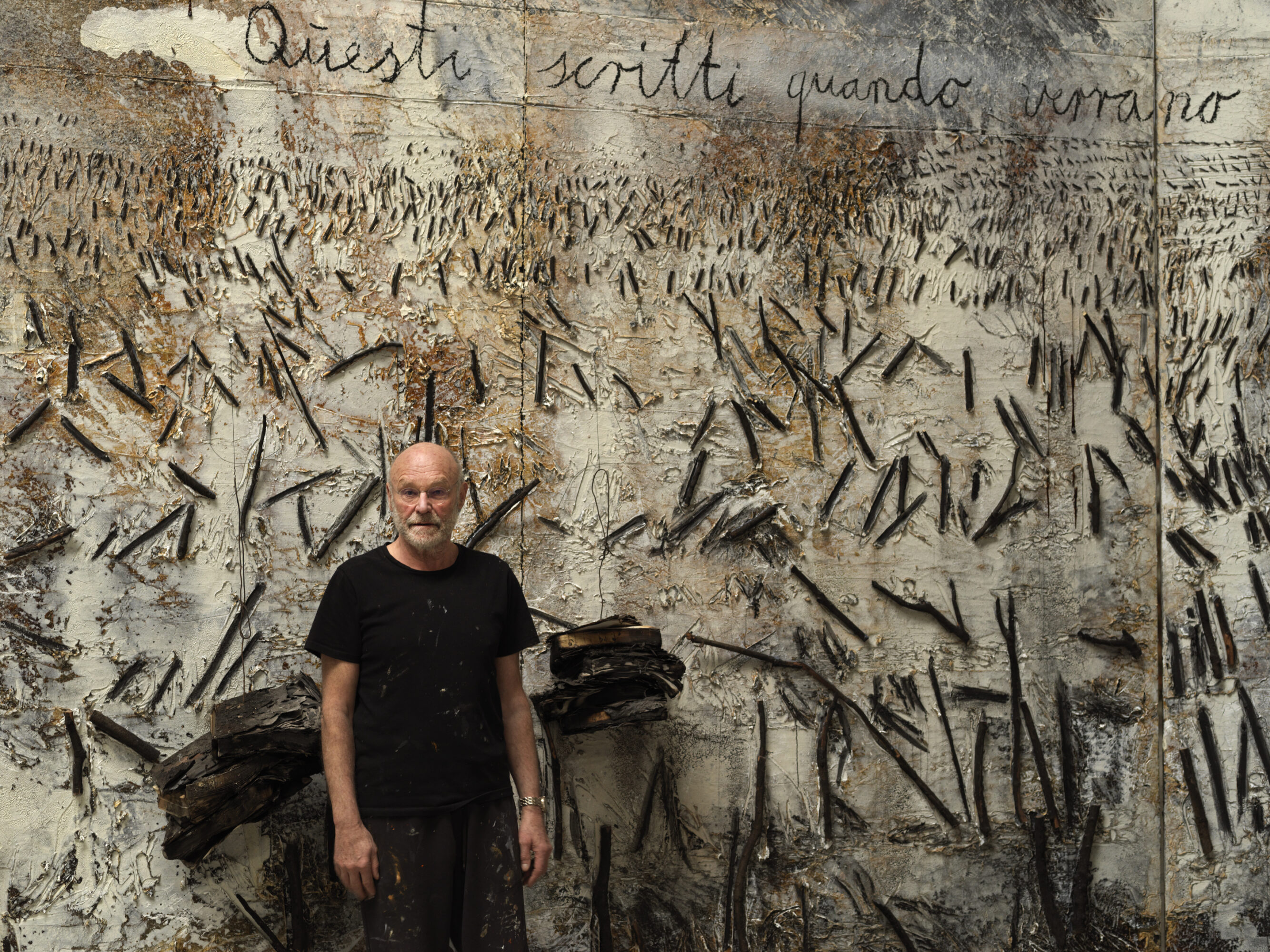Anselm Kiefer’s Inferno in Venice
Beyond Vienna - an insight into Anselm Kiefer's exhibition during the 59th Venice Biennale.
A text by Sabine B. Vogel
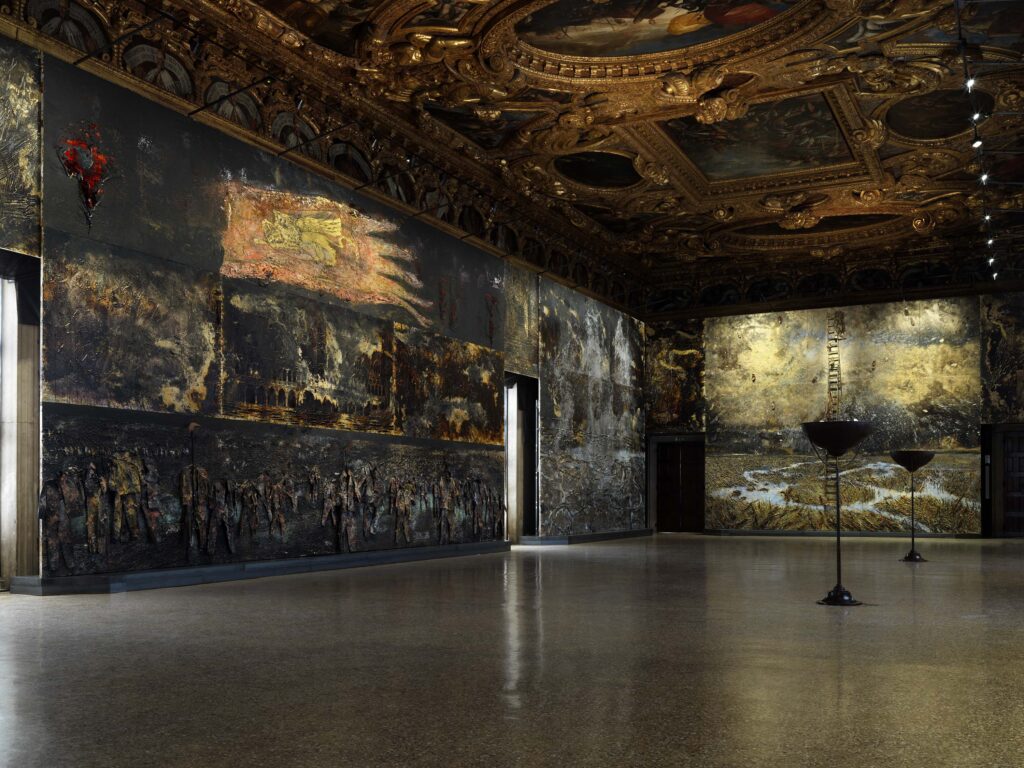
Anselm Kiefer, Questi scritti, quando verranno bruciati, daranno finalmente un po’ di luce (Andrea Emo), 2022, installation view. © Anselm Kiefer, Photo: Georges Poncet, Courtesy Gagosian and Fondazione Musei Civici Venezia
The 59th Venice Biennale is characterized by female, black and indigenous artists. When walking through the exhibitions in the city, however, male blue-chip artists dominate: Georg Baselitz (Palazzo Grimani), Anish Kapoor (Gallerie dell’Accademia and Palazzo Manfrin), Sterling Ruby (Lalazzo Diedo), Raqib Shaw (Palazzo della Memoria). The highlight here is Anselm Kiefer in Palazzo Ducale – as formidable as it is controversial for its monumental pretensions. For Kiefer has staged a world theater in the famous Sala dello Scrutinio, where the Doge was once elected. For this, he had the masterpieces by Jacopo Tintoretto and Andrea Vicentino covered with a scaffolding that reaches from floor to ceiling.
(The scriptures, when burned, will finally shed some light)
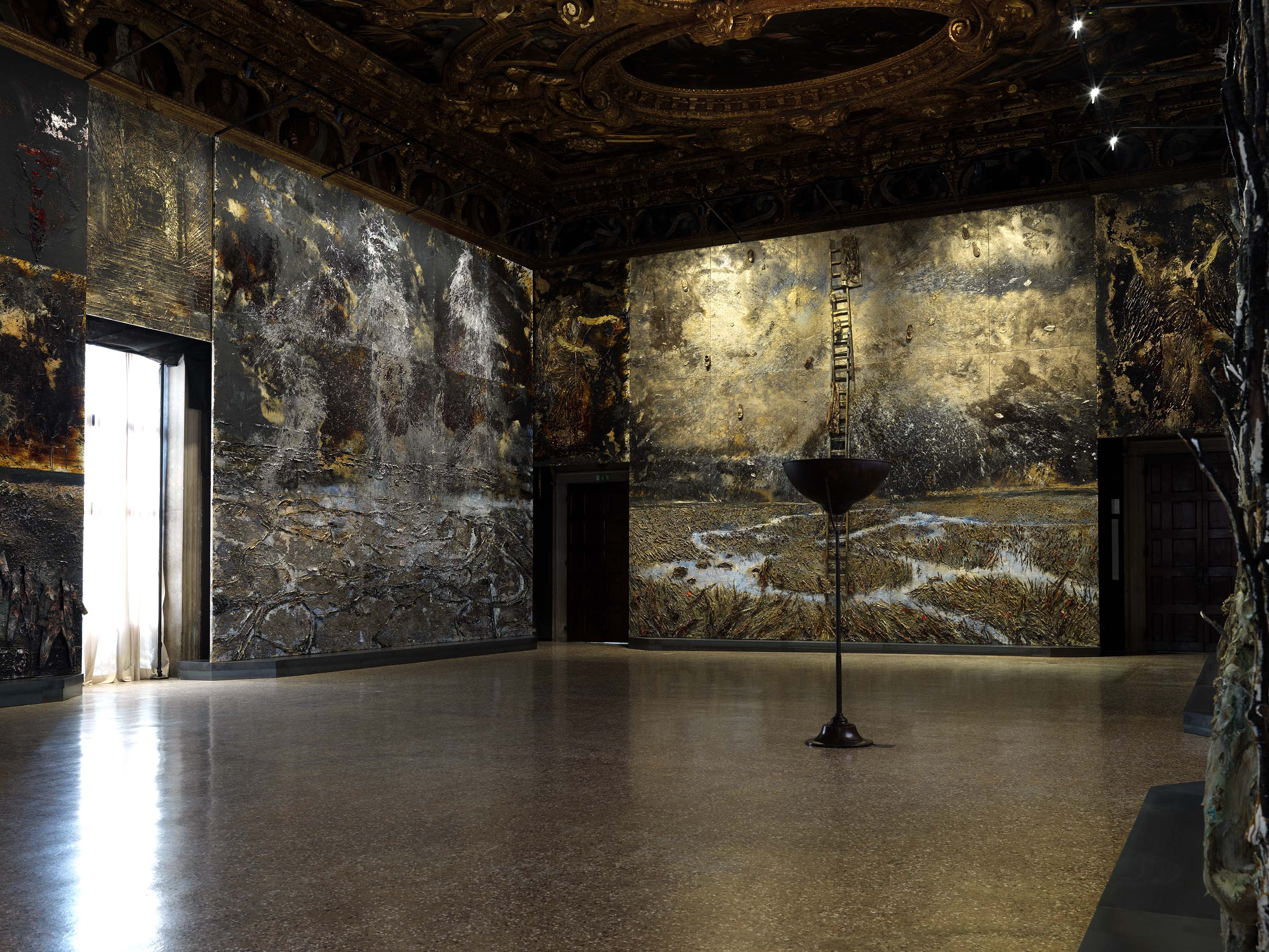
Anselm Kiefer, Questi scritti, quando verranno bruciati, daranno finalmente un po’ di luce (Andrea Emo), 2022, installation view. © Anselm Kiefer, Photo: Georges Poncet, Courtesy Gagosian and Fondazione Musei Civici Venezia
On 800 square meters, his gloomy images now dominate the hall. His title, “Questi scritti, quando veranno bruciati, daranno finalmente un po’di luce” (The writings, when burned, will finally shed some light), is a quote from the Italian philosopher Andrea Emo (1901-1983), whose nihilistic thinking has already inspired Kiefer years ago. Kiefer: “It means that there is nothing eternal under the sun. The only eternal thing is striving.”
While Tintoretto celebrates the victory of the Venetians against the Hungarians in his paintings, Kiefer shows the apocalyptic side of power. The submarines recall Venice’s power on the seas. A metal coffin protrudes from one painting – an image for death, but also an allusion to St. Mark, city patron of Venice, which Kiefer says refers to “human time.” A lead tongue represents “the outpouring of divine grace on the world,” he says.
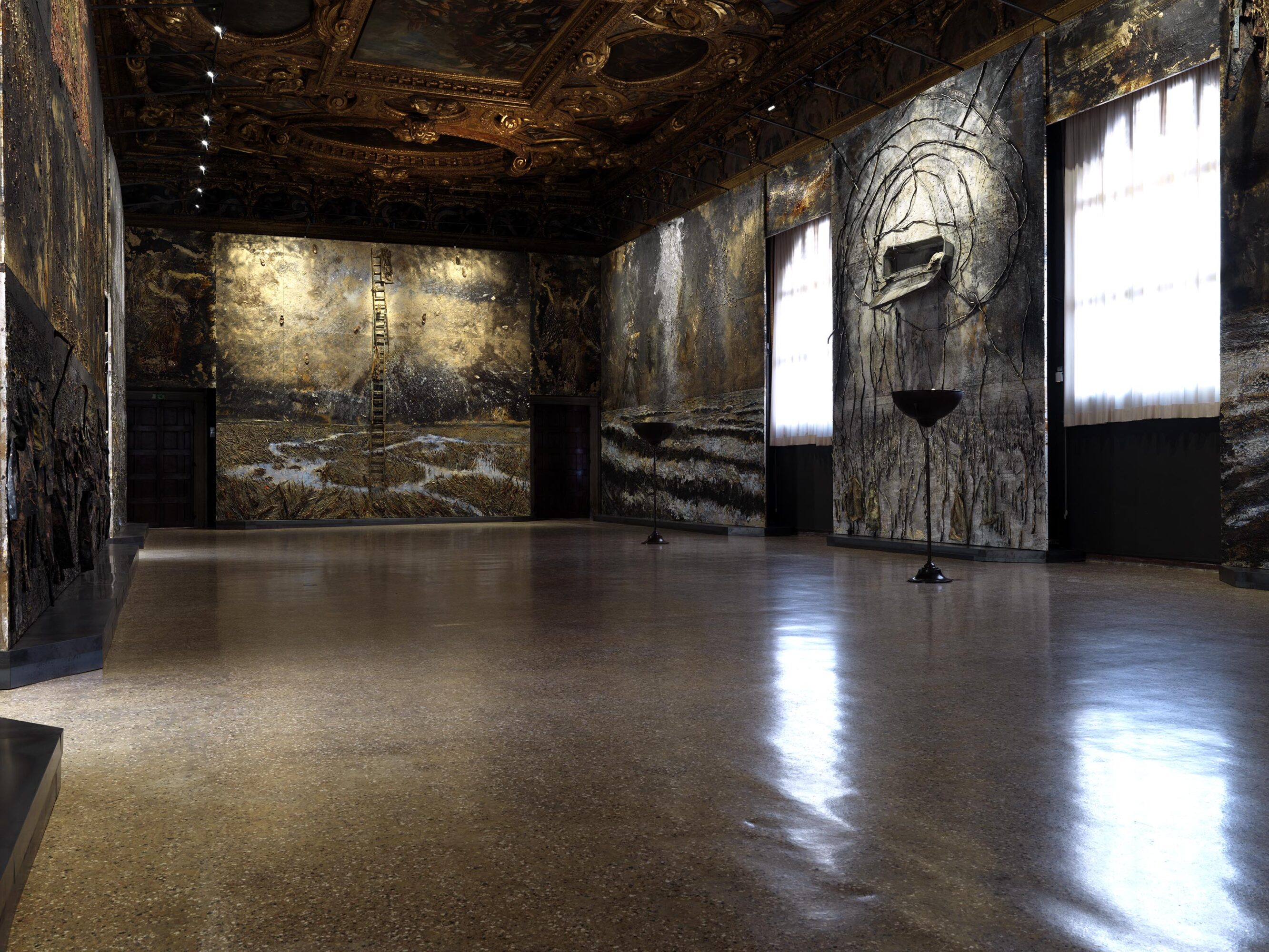
Anselm Kiefer, Questi scritti, quando verranno bruciati, daranno finalmente un po’ di luce (Andrea Emo), 2022, installation view. © Anselm Kiefer, Photo: Georges Poncet, Courtesy Gagosian and Fondazione Musei Civici Venezia
As clear as the direct allusions to Venice are, Kiefer keeps his Inferno, which recounts fire, escape and death, open – it is a free play with fragments of history, which Kiefer sees with Andrea Emo “as a chain of illogical, ahistorical actions, incidents”. Kiefer: “The new space I have created is a superimposition of all kinds of ideas, philosophies from the North, from the South, from the Orient and the Occident,” and: “What is there is only the complete, real presence of nothingness” – albeit a materially violent “nothingness” designed to overwhelm!
(Exhibition open until 29.10.2022)
Text: Sabine B. Vogel
